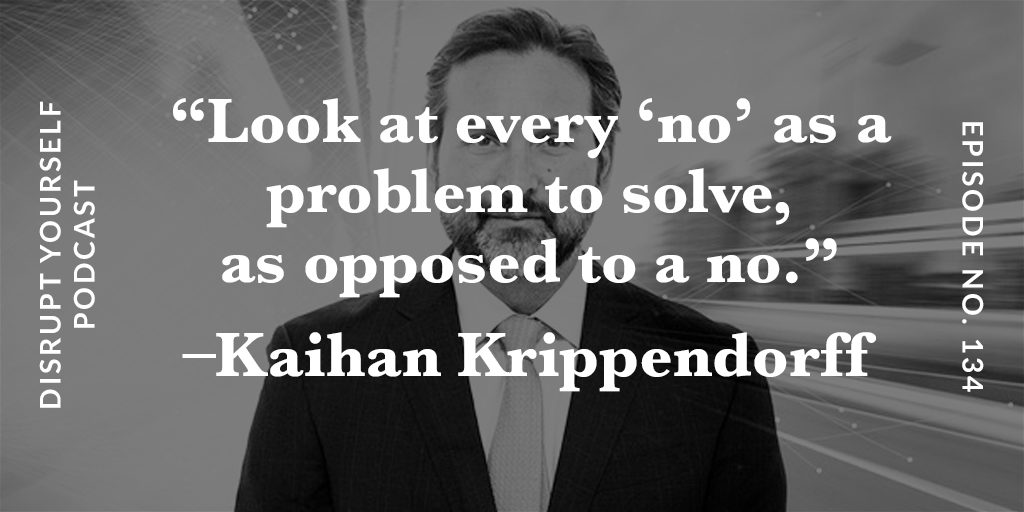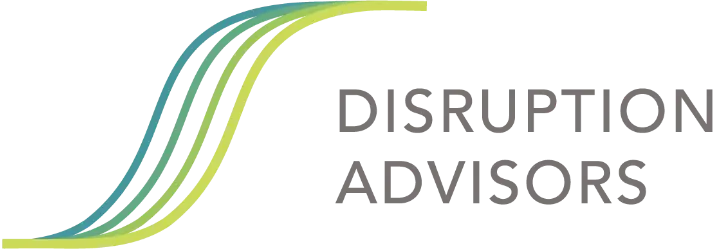When picturing disruptive innovators, many people picture the lone genius entrepreneur: Steve Jobs or Bill Gates in a garage, working outside of The System to get their product to market. But is this really how great innovations are created and incubated?
70 percent of the most transformative innovations were conceived of by employees, not entrepreneurs. You know, if you woke up in the morning, you wouldn’t have a mobile phone to reach for, you would not have the internet to connect it to, you would not have an email to send if you could. If you got sick you couldn’t get an MRI, you couldn’t get a stent. We would live in a dramatically different and I think inferior world if it were true, that employees weren’t capable of innovating.
In Driving Innovation From Within, author Kaihan Krippendorff delves deep into the 30 most transformative innovations of the last 30 years.
What he found was that despite the stereotype it is actually employees that push the boundaries of innovation, and we do a disservice to employees everywhere when we perpetuate the notion that you have to be an entrepreneur to make an impact on the the world.
[B]y celebrating entrepreneurs, which I am an entrepreneur, and I love entrepreneurs, and I study them myself. But when we only study entrepreneurs, we are kind of communicating to employees that, “Hey that’s not your job.”
Kaihan believes that to truly encourage innovation we need to make sure that employees feel they have a safe space in which to create, and more importantly, in which they can fail. The failure of being rejected—of having an idea laughed at, or scorned—is often the first indicator that it is disruptive. That is not to say that there are no bad ideas; however, if you can take the time to step back and examine why an idea is being scorned, or how to overcome the barriers that are being drawn up, it is possible that the idea will end up being the next Apple Computer.

Join us as we discuss Kaihan’s new book, his framework for internal innovation, and what makes a company truly transformative and encouraging of employee innovators.
Listen to the episode in the player above, or download and enjoy it on iTunes. If you’re so inclined, please leave us a review!
Takeaways from this episode:
- Kaihan studied “strategic narratives” for his PhD program, and what he found was that in successful business models today you find companies creating power by controlling or owning something (like a patent), or by coordinating things you don’t control (like Uber).
- While the idea of the entrepreneur as innovator is popular, Kaihan’s research found that employees are not as bound by infrastructure and bureaucracy as we may assume.
- Kaihan created a framework that employee innovators can apply to become more effective at driving innovation internally:
- I – Intent. Employees must activate the intent to innovate so they will see opportunities as they arise.
- N – Need. Recognize what the market and customer need, but also understand what your company needs.
- O – Options. “There’s nothing more dangerous than an idea, when it’s the only one you have.”
- V – Value Blockers. If your business model conflicts with the business model of the parent company or corporation, find ways to address the disparity or adjust the idea to exist in the current business model.
- A – Act. Take action on an idea rather than prove it. “Experiment, rather than writing a business plan.”
- T – Team. Create a cross-functional team for a ground swell of support (even without a budget to support it).
- E – Environment. Understand the organizational political environment in which you are operating. Find an “island of freedom” with the right combination of leadership, talent, structure, and culture to nurture your innovation.
- It is important to remember that an employee’s company is a stakeholder in the game, just as much as potential customers are. For an idea to be successful the company’s needs and motivations should be considered.
- Do something that disrupts your competitor by doing it your way. Make your strategy different to give you an advantage.
- If an idea is rejected, it may have potential to be a disruptor. If someone else gets the idea immediately it’s probably not that novel.
Quote from Mahatma Gandhi: “First they ignore you, then they laugh at you, then they fight you, and then you win.” In other words, do something your competitors will laugh at…until you are no longer funny. - To be truly innovative, an idea needs to be new and interesting; it needs to be adopted; and after adoption it needs to create value. As Steve Jobs said, “Innovation is creativity that shifts. If it doesn’t shift, it’s not innovation.”
Links Mentioned in this Episode:
- Kaihan Krippendorff – Website | Twitter | LinkedIn
- Disrupt Yourself Podcast – Episode 111: Brene Brown
- Driving Innovation from Within: A Guide for Internal Entrepreneurs by Kaihan Krippendorff
- Think and Grow Rich by Napoleon Hill
- Disrupt Yourself Podcast – Episode 126: Rita McGrath
- Pre-Order the new edition of Disrupt Yourself and sign up for the free webinar

